This is a test.
No, not of the emergency broadcast system – but of our resilience as an industry in a time of uncertainty. We recently tuned into a webinar discussing Ragan’s 2025 Communications Benchmark Report – The New Workplace Reality, and came away with some valuable takeaways for marketing communications professionals. The 7th annual edition of the report – a survey completed by 900 communications professionals – explored the topics of AI, DEI, organizational culture, and future needs for learning and development.
The discussion highlighted the current volatile environment for communicators, characterized by constant change, crisis, and the essential need for growth. Key areas experiencing disruption and requiring ongoing development include internal comms, PR, social media/marketing, business acumen, leadership, and technology. One area that remains the same from previous years is that foundational skills are critical – everything from strategic communications, planning, storytelling, and writing, to financial literacy, technology, measurement, and leadership.
While today’s rapid news cycle keeps comms professionals on their toes, the discussion highlighted that there is still opportunity. In our line of work, we can expect three constants: change, crisis, and growth. While the first two are the “fires” that typically receive most of our attention, growth is a fire we must always tend to.
The new workplace norm is that uncertainty is the new reality. The report’s authors underscored the importance of focusing efforts on the most effective channels for internal and external communications and measuring the results. Now is also a time to invest in learning and development to ensure that you are ready to meet new challenges.
The report also found that many organizations are experiencing significant culture changes and business challenges. Respondents shared that top stressors included political unrest and its impact on the workforce, layoffs, C-suite transitions, and efforts to engage a hybrid workforce as more organizations implement some type of hybrid RTO policy.
When asked about the challenges for effective communications, three areas rose to the top: the number one challenge was a lack of staff (45%), followed by too many last-minute requests (39%), and the third was a lack of budget (37%). Communicators juggle a range of responsibilities that may pull them away from strategic work. Unplanned fire drills, competing priorities, and time constraints mean that not every hole can be filled simultaneously; the use of effective channels is key.
Top investment priorities include investing in content production (51%), hiring more full-time staff (48%), and investing in team training (33%), making it clear that content is still king. Skill development for teams is also a top priority as organizations seek to ensure employees can best serve their clients.
The report also highlighted that the two most effective channels for external communications were social media (69%) and press releases (43%) – no change from 2024, but perhaps a surprise for folks who thought press releases were going the way of the fax. Press releases are still a very efficient and effective way of getting news out to a large number of people and news outlets simultaneously. In addition, social media’s ability to reach a broad audience and its relatively simple ability to extract useful metrics on what works continues to drive its growth and adoption.
Most communicators measure their efforts regularly, but nearly 60% measure monthly or quarterly—likely because data tells a clearer story over a 30, 60, or 90-day time period than it does in any given week, which may have a spike in activity or a quiet period that skews the measurement of outcomes.
When asked what gets in the way of effective measurement, the top three answers were lack of time (58% – same as 2024), lack of proper technology (42%, down from 2024 as more tools become freely or cheaply available), and lacking the expertise to analyze key data. Skill development here is a significant area of opportunity.
When asked what specializations communicators will need to future-proof their roles, respondents overwhelmingly agreed that understanding how to use generative AI was number one (46%). This was followed by crisis or issues management (41%) and executive communications (28%).
Finally, respondents agreed that the most essential skills and competencies were strategic communications planning (74%), relationship building (61%), project management (39%) and emotional intelligence (38%).
Communication pros must equip themselves with the skills and knowledge to navigate the future. This will help build trust and demonstrate clear impact—two non-negotiables in today’s landscape.
To learn more about how Zer0 to 5ive can help your company build trust and find its voice, drop us a line.
Q&A with Mergermarket Journalist Marlene Givant StarBy Annmarie Ely

As U.S. editor-sector coverage for Mergermarket, Marlene Givant Star covers a variety of topics from mergers and acquisitions to funding. She has more than 30 years of experience in business journalism and has worked for The Associated Press, where she was a news editor-Money & Markets, Boardroom’s Bottom Line/Personal and Crain Communications’ Pensions & Investments and Investment News.
In her current role as an editor at Mergermarket, she directs the U.S. sector reporting freelance team and writes and edits stories about education and business services companies. 0to5 worked with Marlene on a story highlighting our client, SchoolStatus, an education technology company. At the time, SchoolStatus had gone through a series of acquisitions. Marlene spoke with the CEO and wrote a piece on the company’s M&A activity and its future direction after the newly acquired companies were folded into SchoolStatus.
0to5 recently connected with Marlene about her career, recent articles she’s written, and her insights on what makes a business story engaging for readers. Read our Q&A with Marlene below to learn more.
What do you like about covering business news?
It’s very concrete and relevant. You always learn something new and it is surprisingly applicable to daily life.
What types of stories/subjects do you look for when you’re planning coverage?
At Mergermarket, we cover corporate strategy including M&A, capital raises, and other expansion strategies. We also cover news as it breaks.
Do you have any favorite stories from what you’ve covered?
I especially like taking a step back and looking at trends using our data. For example, I recently wrote a story about franchise businesses receiving heightened interest from private equity firms. I also edited our International Women’s Day feature highlighting women in the male-dominated M&A industry.
What should people keep in mind when reaching out? Are there any types of stories or content you’d like to receive more of?
I like to hear about mature companies past the Series B stage, particularly ones focused on education or business services. I am also interested in environmental, social, and governance topics.
5 Tips for Using Bluesky as a PR Professional
Bluesky, a social media platform that was first launched in 2019, is a competitor for X (formerly known as Twitter). The platform has recently attracted many new users, including a growing number of media publications and journalists. Bluesky currently has more than 32 million users, and has more than tripled its number of users since September 2024. With the growth of its userbase and its popularity with the media, Bluesky is a social media platform that PR professionals shouldn’t ignore.
Below are five tips for using Bluesky as a PR professional.
1. Don’t Be Intimidated: Joining and Observing Is a Great First Step: Each social network has its own special set of “unwritten rules” and expectations. Starting a new account can be intimidating and feel unfamiliar. Simply setting up an account and observing what people post is a great way to familiarize yourself with the platform.
2. Follow Journalists and Make Use of Starter Packs: Once you’re set up, look for the journalists and outlets you work with (or would like to work with) and follow them. Using the starter packs feature makes it easier to find teams of journalists from specific outlets or coverage areas.
- A starter pack allows Bluesky users to add people to a shareable list of recommended accounts. Many newsrooms are creating starter packs with their teams. For example, The Atlantic has a starter pack featuring their reporters.
- You can also find starter packs featuring journalists and outlets to follow based on the topics they cover. For example, The Hechinger Report put together an education news starter pack with a variety of outlets and reporters who cover education.
3. Discover and Follow Relevant Hashtags: Similar to X, Bluesky users can find news and posts by searching for hashtags. To follow education news, for instance, you can follow #EduSky. When determining the best hashtags to follow, it’s important to observe the hashtags that journalists and outlets are using in their posts. Hashtags are also a good way to continue to expand your feed and the sources you follow. When you’re ready to start posting your own content, add the hashtags your key audiences are using to help broaden the reach of your posts.
4. Listen More Than You Pitch: While there may be some journalists who don’t mind receiving a pitch on social media, many prefer to receive pitches via email. As a PR professional, it’s important to know your audience and when in doubt, avoid sending unsolicited pitches to journalists on Bluesky. You may find that journalists post requests for sources or interviews about specific topics and responding to those can be a good way to start a relationship with someone you haven’t worked with before.
5. Engage with Journalists’ Content: Read and share journalists’ stories on Bluesky. Building a feed of stories by reporters will allow you to stay informed about what they’re covering, what topics may be of interest, and the current news cycle. You may also discover new pitch ideas you hadn’t thought of by regularly engaging with your Bluesky feed!
In social media there will always be change. Today’s leading platforms may no longer hold the audiences they once did, while emerging platforms may become go-to destinations. Having a willingness to adapt and try new platforms can allow you to expand your network, stay informed, and connect as you promote your clients.
To learn more about how Zer0 to 5ive can help drive visibility and industry leadership for your company drop us a line.
Navigating PR in a Rapidly-Shifting and Politically Complex LandscapeWhether you’re in education, AI, healthcare, or tech, today’s companies must navigate an increasingly complex and fast-moving communications landscape. From policy changes to regulatory debates and cultural flashpoints, effective communication requires a strategic and well-prepared approach.
For PR professionals, this unpredictable and often politically-charged environment presents several challenges: ensuring that messaging stays aligned with a company’s mission; maintaining credibility with key audiences; and determining which news topics are relevant enough to engage with—while knowing when it’s best to stay out of the conversation altogether.
In this post, we’ll explore key strategies for guiding clients through an increasingly complex communications landscape.
1. Stay Mission-Focused, Not Politically Divisive
Not every organization needs to weigh in on political debates—in fact, we would recommend that most do not. However, every organization does need to be prepared for them. The key is to ensure all messaging remains aligned with core values rather than reacting impulsively to external events.
For example, a company providing school safety technology should highlight the role of proactive security measures in protecting students and educators, rather than getting involved in contentious debates about gun control. Similarly, a venture capital firm investing in emerging technology should emphasize its role in fostering innovation and supporting groundbreaking startups, rather than engaging in debates over government regulations on tech funding.
When crafting messaging in response to a current news story, always ask:
- Does this align with our core mission?
- Is this statement necessary, or are we reacting emotionally to a moment?
- How will our key stakeholders perceive this?
2. Knowing When to Engage or Stay Silent
One of the most difficult decisions in PR today is whether to take a public stance on an issue or remain neutral. While some moments demand a response, others can pull companies into unnecessary controversy. If your company chooses to engage, ensure that your response is measured, intentional, and on-message with your mission.
When to engage:
- If the issue directly impacts your company, employees, or customers. (Example: A policy change affecting school safety tools would require a response from a company in that space.)
- If staying silent could damage credibility or be perceived as negligence.
- If your brand has a history of advocacy in this space.
When to stay silent:
- If the issue is outside your industry and does not impact your business.
- If your audience holds diverse perspectives, and a public statement could potentially alienate some of your audience and/or distract from your mission.
3. The Role of Thought Leadership
A powerful way to steer conversations away from politics while maintaining credibility is through thought leadership. Instead of engaging in politically-charged discussions, position your executives and subject matter experts as industry voices focused on solutions.
It’s also important to recognize when a trending topic presents an opportunity to share your perspective. For example, if there is widespread media attention on AI in education, an EdTech company with AI-driven solutions can contribute to the conversation—but the key is to stay focused on core messaging. Use the interest in the topic to showcase your expertise, but avoid straying into political or regulatory debates.
For example:
- A healthcare startup founder can talk about patient outcomes rather than debating the politics of healthcare legislation.
- A cybersecurity expert can focus on protecting user data without engaging in political discussions on regulation.
4. Managing Internal and External Stakeholders
In today’s polarized climate, the challenges of communication extend beyond external media relations to internal relations as well. Employees, investors, and partners may have differing expectations about how a company should address certain issues, making it essential to have a clear and consistent approach to both internal and external communications.
Best practices for internal communications:
- Be transparent about the company’s approach. If a decision is made to stay neutral on an issue, clearly explain why to employees.
- Ensure leadership is aligned before making public statements. Internal divisions can quickly become external PR issues.
- Create clear guidelines for employee social media engagement. Employees often become unofficial spokespeople, so providing guidance can prevent mixed messaging.
5. Leveraging Media Relationships
Journalists today are working in an increasingly politicized and fast-moving news cycle. PR teams must approach media engagement with careful strategy to ensure their clients’ stories aren’t misinterpreted or taken out of context. Building strong relationships with trusted journalists can also help ensure fair, accurate coverage even in sensitive situations.
How to be intentional and strategic with media engagement:
- Understand the editorial stance of different outlets and tailor outreach and pitches accordingly.
- Avoid publications with overly political or sensationalist coverage.
- Anticipate potential angles that could introduce bias or controversy and proactively prepare talking points.
- Offer data-driven insights rather than emotionally charged opinions to keep coverage focused on facts.
PR as a Strategic Compass in Uncertain Times
Navigating a politically charged PR landscape is not about avoiding difficult topics—it’s about managing them strategically. The companies that succeed are those that stay mission-driven, well-prepared, and thoughtful in how they communicate.
At Zer0 to 5ive, we specialize in developing integrated marketing and communications strategies that deliver measurable results, build trust, and maintain credibility—even in turbulent times.
If your company is looking for a PR partner to navigate today’s complex landscape, drop us a line!
What We’re Reading: “The Art & Craft of PR” by Sandra StahlThe Ever-Evolving Role of PR: Staying Grounded in Timeless Fundamentals
Public relations is a field that has always thrived on adaptability, yet its core purpose remains unchanged. Sandra Stahl, a seasoned PR strategist, thought leader, and educator, explores this balance in her book, providing a forward-looking perspective on the role of PR in modern communications. While her book is an essential guide for those considering a career in PR, even experienced professionals will find valuable insights that reaffirm the enduring principles of effective public relations.
Defining PR in the 21st Century: The Importance of Staying Grounded
The world of communications is rapidly evolving, but at its heart, PR remains about solving problems through meaningful engagement with the public. Stahl sums up this idea perfectly:
“Public relations is about relating to the public in ways that solve problems. That’s the historical intent of this profession and will, ironically, allow us to capture the future.” (Stahl, p. 15)
One of the common pitfalls PR professionals encounter is becoming too focused on individual tactics or specific tools. The temptation to execute a campaign based on a client’s request, rather than identifying the underlying need or opportunity, can limit effectiveness. Stahl encourages PR professionals to adopt a holistic approach—one that integrates PR seamlessly into an organization’s broader business strategy rather than treating it as a siloed function activated only for product launches or crisis management.
The Art and Craft
PR is a finely honed craft, but today, it’s easy for the art to get lost in the execution. With new tools and platforms emerging constantly, it’s tempting to prioritize tactics over strategy. Stahl calls our attention to the fact that:
“Our future is not confined to our ability to own the latest tools available or make the most unique or innovative use of them. We don’t have a ‘swim lane’ or a ‘silo’ that confines our professional capabilities or growth.” (Stahl, p. 7)
This perspective is particularly relevant as PR professionals navigate an ever-expanding digital landscape. The tactics we use—social media, influencer partnerships, or AI-driven communication—may advance, but the fundamentals of PR remain broad, flexible, and more crucial than ever.
Key Takeaways for PR Professionals
Attraction vs. Promotion
One of the most compelling distinctions Stahl makes is between attraction and promotion:
“Anyone can have a megaphone. Getting heard and having that message resonate is something else altogether.” (Stahl, p. 47)
Promotion is a one-way broadcast, often ignored or tuned out. Attraction, on the other hand, is a mutual exchange where the audience willingly engages with the message. Effective PR requires cultivating authentic connections rather than merely amplifying a message as loudly as possible.
The Power of Listening
A vital but often overlooked aspect of PR is the ability to listen. Stahl emphasizes the importance of understanding stakeholders on a deeper level:
“We have two ears and one mouth, so we should listen 2x more than we speak.” – Zeno of Citium (336-265 BCE)
PR professionals should approach communication with the intent to truly understand, not just to respond. With active listening, we can uncover valuable insights about our audience’s motivations, concerns, and aspirations.
Balancing Innovation with Time-Tested Lessons
As PR evolves, it’s easy to get caught up in trends – or staying ahead of them. However, Stahl reminds us of the value in reflecting on the discipline’s history. Case studies, best practices, and historical successes offer lessons that remain relevant today. Michael Blash, Head of Internal Communications at Merck, points out that mining the past for guidance can be just as insightful as staying up to date with the latest industry shifts.
Understanding PR’s Role in Business and Society
PR is not just about brand awareness—it plays a crucial role in shaping the relationship between businesses and society. Stahl encourages professionals to view their role as facilitators, ensuring that businesses remain attuned to public sentiment and expectations. Bringing external perspectives into internal decision-making processes strengthens organizations and enhances their credibility.
A Nuanced Approach to Communications
A last key lesson from Stahl’s book is the importance of strategically selecting communication channels. Rather than defaulting to platforms that feel trendy or personally appealing, PR professionals must prioritize the channels that best reach and resonate with their audience. This means understanding the habits and preferences of stakeholders and delivering messages in the most relevant and trusted formats.
The Future of PR: Mastering the Balance Between Art and Strategy
As PR continues to evolve, its foundations remain steadfast. By balancing strategy with execution, listening with speaking, and attraction with promotion, PR professionals can build meaningful relationships that stand the test of time. Stahl’s book serves as an important reminder that while tools and tactics will change, the art and craft of PR remain limitless in their potential. The future of PR lies not in chasing the latest trends but in mastering the timeless fundamentals that define the profession’s true impact.
To learn more about how Zer0 to 5ive can help drive visibility and industry leadership for your company drop us a line.
Hook, Line, and Segment – Mastering the Art of Broadcast PitchingWhen it comes to successful broadcast pitching, sometimes it’s luck, but a lot of the time, it’s about developing the right pitch, delivering it to the right person, and tying it to a timely trend.
Unlike other media, broadcast outlets operate on really tight deadlines and prioritize stories with strong visual and emotional appeal. Producers and bookers are flooded with pitches daily, so standing out requires a strategic approach.
Below are key tips to increase your chances of landing a segment and getting your story on the air.
Know the Audience: Step one is sometimes obvious, but it’s critical that you know the audience (who watches the show) and style (does the show have guest conversations?, etc.) of the segment. Understand what stories resonate with their viewers or listeners to ensure your pitch aligns with their needs. For example, don’t pitch a CEO for a business story to a consumer morning show that talks about the latest/ trendiest eye cream. You want to ensure that what you are pitching will resonate with the producer or the audience.
Leverage Timely Tie-ins: Highlight why your story matters now. Make sure your narrative is newsworthy, timely, and relevant, and frame it in a way that stands out from typical pitches. Look for trending topics, big upcoming events, or tap into breaking news that aligns with your story , making it even more compelling for producers who are looking for new ideas.
Be Concise: It’s especially important in broadcast pitching to keep your pitches concise. Producers are busy, and usually on deadline, so they appreciate pitches that get straight to the point. Use a compelling subject line and hook and present the key details in a clear, short format.
Embrace Personalization: Who doesn’t like to feel the love!? Avoid generic mass emails – they don’t work for producers. Referencing a past segment to explain why your story is a great fit for their program or taking the time to tailor your pitch in other ways shows producers that you understand their content and can increase the likelihood of your story being considered.
Provide Supporting Materials: Include relevant assets such as video clips, b-roll, or images, and be ready to offer additional information or interviews promptly. For broadcast, visual assets are critical so that the booker or producer can see the subject matter expert in action and get a sense of how they will be on camera.
Successful pitching is a mix of preparation, persistence, and knowing how to frame your story in a way that resonates with both producers and their audiences. The above tips can help ensure your pitch is not only opened, but seriously considered by busy broadcast producers/bookers looking for stories.
To learn more about how Zer0 to 5ive can help drive visibility and industry leadership for your company drop us a line.
0to5 Media Moments: February 2025In our blog series, Media Moments, the Zer0 to 5ive public relations team highlights a variety of media coverage secured by the team on behalf of our clients every month. Check back each month to see the team’s ongoing work.
Today’s journalists have so many important topics to discuss as part of their coverage, and organizations like those we support at Zer0 to 5ive can offer valuable insights.
In February, we amplified our clients’ views on topics ranging from AI in education to application development challenges.
Check a few of them out!
Forbes for UTI

AI may transform entire industries, but it won’t replace skilled trades – the technology serves as a partner, not a disruptor. Our team secured interest from a Forbes contributor to speak with Universal Technical Institute, Inc., about how they’re equipping students with the latest AI knowledge to keep them ahead of the curve. Read the article.
Forbes for YouScience

As technologies like AI begin to reshape the future of our nation’s workforce, our society faces a growing and critical challenge: the misalignment between job market demands and education. Our team collaborated with YouScience to discuss this issue, which is the focus of their newly published book, “Preparing Tomorrow’s Workforce,” and to provide insights on how this misalignment can be addressed. Read the article.
SD Times for R Systems

When enterprises integrate new technologies into their solutions or operations, they encounter various challenges, including issues related to scalability and performance. Our team collaborated with R Systems to submit an insightful perspective to SD Times on why enterprises need to maintain a big-picture view when implementing new technologies. Read the article.
Education Week for AERDF
![]()
At a time when students across the country are struggling with reading and math, it is more important than ever for experts to share ways educators can help build confidence and engagement among students in these subjects. Our team worked with the Advanced Education Research and Development Fund (AERDF) to connect their CEO with a journalist at Education Week to discuss why it’s important to change the way math is talked about in daily conversations to instill more positive math identities in students. Read the article.
EdTech Digest for HMH
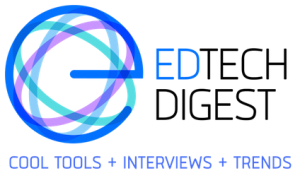
While AI offers many benefits to education, many educators believe it is essential to develop AI with ethical considerations in mind, and they require more professional development to use the technology effectively. Our team collaborated with HMH to conduct a Q&A for EdTech Digest on how educators feel about AI in their classrooms, where it can be most helpful, and why professional development is critical. Read the article.
To learn more about how Zer0 to 5ive can help drive visibility and industry leadership for your company drop us a line.
0to5 Media Moments: January 2025In our blog series, Media Moments, the Zer0 to 5ive public relations team highlights a variety of media coverage secured by the team on behalf of our clients every month. Check back each month to see the team’s ongoing work.
Thought leadership is an integral part of our media relations programs and oftentimes is a significant source of coverage for our clients. This type of coverage can take shape in many forms, including as a podcast, a brief quote from an expert within a larger story, in-depth Q&As, or bylines and op-eds.
Since thought leadership stories come in various forms, our team has numerous opportunities to craft a tailored narrative that effectively emphasizes a value proposition for a technology or product (without directly naming it) or offers unique insights on current industry trends.
This month, our team secured a range of thought leadership coverage for our clients, including a few podcast features and Q&A articles.
Check a few of them out!
Techopedia for R Systems

A well-timed and engaging pitch featuring a spokesperson with deep expertise in a critical topic is the ideal combination for journalists. This is demonstrated by a recent placement by our team for R Systems and the company’s CEO around data curation in AI – a topic that is gaining traction in the media. Our team leveraged unique insights from the executive to engage in the data discussions, capturing the attention of a Techopedia journalist. That interest led to a subsequent interview, resulting in a detailed Q&A. Read it here.
AIHub for Sony AI

Great thought leadership is rooted in research, as journalists constantly seek original data or findings that help them craft compelling stories backed by facts. In the realm of AI, research is particularly critical for both discussions and media reporting. That’s why our team utilized innovative research from Sony AI to provide AIHub with the chance to engage with one of the organization’s leading thought leaders on image generation in AI. This resulted in the publication of an insightful Q&A. Read it here.
The “What the Dev?” Podcast for Digital.ai

Offering forward-looking insights from subject matter experts is a proven method for generating interview interest and media coverage. That’s why our team collaborates with clients each fall to outline compelling predictions for the upcoming year. Often, journalists simply pick up the predictions and publish them as-is, but sometimes, they help us arrange interviews for more in-depth articles or podcasts on the topic. This was the case with Digital.ai, whose CEO was on the “What the Dev?” podcast to discuss his view on the future of software engineering intelligence. Listen to the podcast here.
CyberWire’s “Caveat” Podcast for Onymos

Aligned with an awareness day or month, insights from a client’s subject matter expert can present a valuable opportunity for journalists to address the issues most important to their audience. For instance, CyberWire’s “Caveat” Podcast recently sought to delve into data privacy with Onymos. Our team leveraged Cybersecurity Awareness Month in October, along with compelling data from an Onymos report, to capture the host’s interest in speaking with the company’s CEO for a podcast episode. Listen to the podcast here.
To learn more about how Zer0 to 5ive can help drive visibility and industry leadership for your company drop us a line.
0to5 Media Moments: Nov & Dec 2024In our blog series, Media Moments, the Zer0 to 5ive public relations team highlights a variety of media coverage secured by the team on behalf of our clients every month. Check back each month to see the team’s ongoing work.
Each year, public relations professionals must embrace the changing media cycle and landscape as they pursue coverage for their clients. Now, more than ever, current events are shaping the topics journalists cover across various industries, and editorial teams have had to adapt their newsrooms.
In these times of change and fluctuation, public relations professionals must demonstrate true grit and agility to persevere. Our team showed these characteristics in spades.
Over the past year, we have secured thousands of articles for our clients in outlets ranging from cable news networks to technology trade publications. Each story has focused on key themes showcasing our clients’ thought leadership or has showcased significant milestones in their business journeys.
Check them out!
CNBC’s The Exchange for UTI
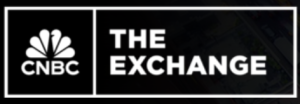
Universal Technical Institute, Inc. (UTI) released its year-end earnings, prompting our team to pitch the news and the organization’s CEO to key contacts while also highlighting a number of timely trends. Two of the trends included what’s in store for the skilled trades and the broader workforce in 2025, which caught the eye of producers at CNBC’s The Exchange. Watch the segment here.
Forbes for HMH
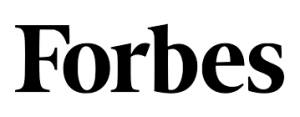
HMH recently unveiled HMH Classcraft’s(TM) AI Summarization tool, which allows teachers to quickly understand student comprehension and adapt instruction in real-time. The innovative nature of this tool and the benefits it offers educators in the classroom as they work to understand student learning in the moment garnered attention from Forbes. Read the article here.
IEEE Spectrum for Nauto
![]()
Our team is a strong proponent of rapid response pitching (or newsjacking) and has found it to be a successful method for securing media attention for our clients. One notable example of this was with Nauto and IEEE Spectrum. As a result of the team’s efforts, the company’s CEO was used as a source on detection technology for driver fatigue. Read the article here.
Education Week for AERDF
![]()
Respectful persistence is key to building relationships with journalists on behalf of our clients. By building these relationships, your client can become a go-to resource on trending topics, like in the case of the Advanced Education Research and Development Fund (AERDF). Read the article here.
Inside Higher Ed for YouScience
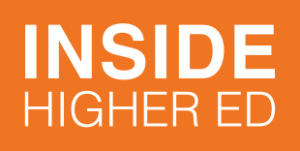
YouScience published a new piece of research, “Workforce Report: Fixing America’s Broken Talent Pipeline,” which offers an in-depth look at the challenges facing U.S. employers as they grapple with unprecedented labor shortages and an evolving talent landscape. This report included key information that captured the interest of Inside Higher Ed. Read the article here.
GTPlanet for Sony AI
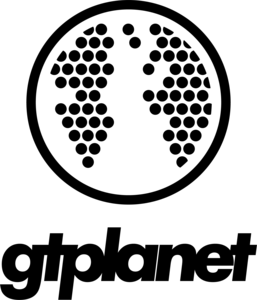
Sony AI recently showcased new exploratory capabilities of its gaming AI agent, Gran Turismo Sophy (GT Sophy), which was of great interest to GTPlanet. The founder of the outlet sat down with two of Sony AI’s researchers to understand the latest iteration of the agent. Read the article and watch the interview here.
The Quantum Insider for Sony Innovation Fund

Insightful thought leadership on unconventional topics from client experts can be a great way to generate interest among journalists. Working with Sony Innovation Fund, our team secured interest from The Quantum Insider in speaking with one of the fund’s managing directors to hear his thoughts on quantum computing for a feature article. Read it here.
Patient Safety and Quality Healthcare for CENTEGIX
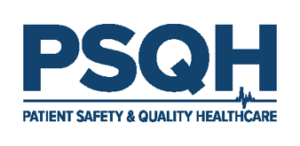
Contributed content is not only a great way for clients to assert their leadership on particular topics, but it also helps media outlets that are always in search of content. Our team worked with CENTEGIX to develop an article describing the current state of workplace safety in the healthcare industry for Patient Safety and Quality Healthcare. Read it here.
To learn more about how Zer0 to 5ive can help drive visibility and industry leadership for your company drop us a line.
Lessons in Persistence – Placing Op-Eds in a Year of Unrelenting NewsAs PR professionals, we are charged with staying on top of the news and events happening all around us – and 2024 has been a non-stop year! With the convergence of major global events, geopolitical tensions, extreme weather, economic challenges (hello, inflation), and the U.S. presidential election, trying to break through the media noise with a well-timed, well-written and compelling op-ed has been challenging.
Have an opinion? So does everyone else. Afraid to offend with a strong stance? Your competitors and others aren’t.
The lessons below may not be new, but they are a strong reminder that timing is everything and words matter. As Einstein famously said, the definition of insanity is doing the same thing over and over and expecting different results. If at first, you don’t succeed, try again – or it may be time to pivot.
- Make a crystal clear argument – The meaning of an op-ed is an opinion editorial – not a marketing blog or byline article. If there is no clear opinion from the author, then it’s not an op-ed. Make a convincing case for why your opinion holds weight without putting those with opposing views down. You can be bold and provocative without being harsh.
- Consider timeliness – One of the trickiest parts of placing an op-ed is writing quickly enough to submit your piece within the very tight time frame of the news cycle. A strong op-ed should address a current event, trend, or hotly contested topic. Knowing the outlet you are writing for is also a key part of successful placement – audience matters. Your op-ed should be tied to something relevant to the publication’s audience to increase the likelihood of getting the editor’s attention.
- Provide a unique perspective – What can you offer to a debate that is unique and provides a different point of view from what has already been argued time and again? Analogous to the business strategy of finding the blue ocean, think critically about what hasn’t been already said to find the untainted argument that hasn’t been made yet.
- Find support for your POV – When appropriate, support your argument with evidence; include recent statistics and high-quality research from credible, objective and respected sources to back up your claims.
- Be concise – Most op-eds should stay within 500-800 words and are written for the average reader. Leave the jargon for the experts.
- End with a clear call to action – By the end of the article, it should be clear to the reader what you are asking them to do – is your goal just to make them aware, change their opinion, or do you want them to take initiative and make a move?
- Don’t overlook the trades – We all would love our clients to be featured in the NYT, Washington Post, or other national outlets – that’s why the competition for getting an op-ed placed in those outlets is so fierce. It’s one of the best ways to get a bold opinion out there in front of millions of eyeballs. In fact, the NYT typically receives more than 1,000 unsolicited op-ed submissions a week. If your first choice for placement falls through, or it becomes clear that an article is not getting the attention of the national media, don’t sit back on the trades. In a recent study of B2B leaders and executives, 82% said trade media coverage directly impacts purchase decisions. Getting your point of view in front of the right audience can be just as important as getting in front of a wide audience.
- If all else fails, post to LinkedIn – If you are confident that you have a strong op-ed, and have checked all the boxes to make sure it’s a compelling piece, then it just might be that the window of opportunity has passed; timing is tough to always get right. But don’t throw away a good op-ed! If all else fails, having your client post the piece to his or her LinkedIn can build thought leadership and visibility within their network. If it sees a lot of engagement, you can boost it to get it in front of more – and new – targeted readers.
A good piece of content is valuable no matter what and has legs beyond its first home, so opine away!
To learn more about how Zer0 to 5ive can help drive visibility and industry leadership for your company drop us a line.
